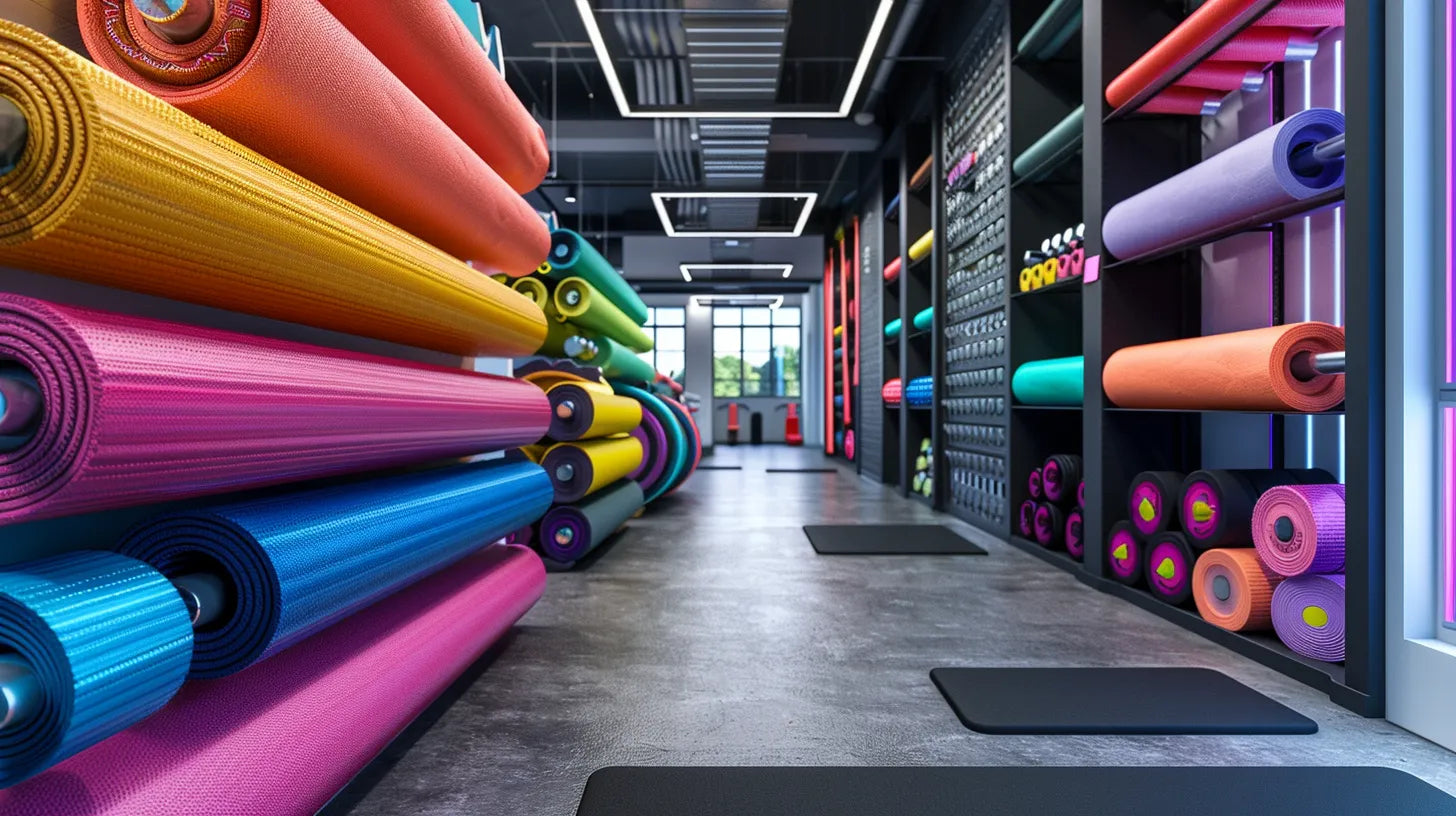Why Exercise Mats are Essential for Your Workouts
Exercise mats are a crucial piece of equipment for anyone who wants to maintain a consistent fitness routine. Whether you're practicing yoga, Pilates, or doing bodyweight exercises at home, a high-quality exercise mat can make all the difference in your comfort and performance.Here are some key reasons why exercise mats are essential:
- Cushioning and support: Exercise mats provide a cushioned surface that protects your joints and spine from the hard floor, reducing the risk of injury and discomfort during your workouts.
- Non-slip surface: A good exercise mat offers a non-slip surface that helps you maintain stability and balance during your exercises, even when you start to sweat.
- Hygiene: Using your own exercise mat ensures a clean and hygienic surface to work out on, especially important when sharing equipment at a gym or studio.
- Versatility: Exercise mats are portable and can be used for a wide variety of workouts, making them a versatile addition to your fitness gear.
Factors to Consider When Choosing an Exercise Mat
With so many options available, selecting the right exercise mat can be overwhelming. Here are the key factors to consider when making your choice:
1. Thickness
The thickness of your exercise mat will determine the level of cushioning and support it provides. Thinner mats (around 1/16 inch) are better for activities that require balance and stability, such as yoga. Thicker mats (1/4 inch or more) offer more cushioning, making them ideal for high-impact exercises or those with joint issues.
2. Material
Exercise mats are typically made from PVC, rubber, or TPE (thermoplastic elastomer). PVC mats are durable and easy to clean but may have a strong odor when new. Rubber mats offer excellent grip and are eco-friendly but can be heavy. TPE mats are a newer option that combines the best qualities of PVC and rubber, providing good grip, cushioning, and durability.
3. Size
Consider the size of the mat based on your height and the type of exercises you'll be doing. A standard yoga mat is around 68 inches long, but taller individuals may prefer an extra-long mat (up to 84 inches). Also, consider the width of the mat, as a wider surface can provide more stability for certain exercises.
4. Texture
The texture of your exercise mat can affect your grip and comfort during workouts. Some mats have a smooth surface, while others feature a textured or ribbed pattern for added traction. Choose a texture that suits your preferences and the type of exercises you'll be doing.
5. Portability
If you plan to take your mat to the gym or travel with it, consider its weight and portability. Some mats come with carrying straps or bags for easy transport.
Top Exercise Mat Recommendations
Based on the factors discussed above, here are some top exercise mat recommendations for various fitness needs:
- Best for Yoga: [[Manduka]] PROlite Yoga Mat - A high-quality, durable mat with excellent grip and cushioning.
- Best for Pilates: STOTT PILATES Deluxe Pilates Mat - A thick, cushioned mat that provides superior support and comfort for Pilates workouts.
- Best for High-Impact Exercises: [[Gorilla Mats]] Premium Large Exercise Mat - An extra-large, thick mat that offers ample cushioning for high-impact exercises and weightlifting.
- Best for Travel: [[Gaiam]] Foldable Yoga Mat - A lightweight, foldable mat that's perfect for on-the-go workouts and travel.
Caring for Your Exercise Mat
To ensure your exercise mat lasts as long as possible, it's important to care for it properly. Here are some tips:
- Clean your mat regularly with a mild soap and water solution, and allow it to air dry completely before rolling it up.
- Avoid exposing your mat to direct sunlight or heat sources, as this can cause the material to break down over time.
- Store your mat in a cool, dry place when not in use, either rolled up or hung on a mat rack.
- Replace your mat when it starts to show signs of wear and tear, such as crumbling or flaking material, to ensure your safety and comfort during workouts.
Finding the perfect exercise mat is like finding your ideal workout partner - it supports you, keeps you grounded, and helps you reach new heights in your fitness journey. With this guide in hand, you're well-equipped to choose the best mat for your needs and take your workouts to the next level. Now, roll out that mat and get ready to sweat!










